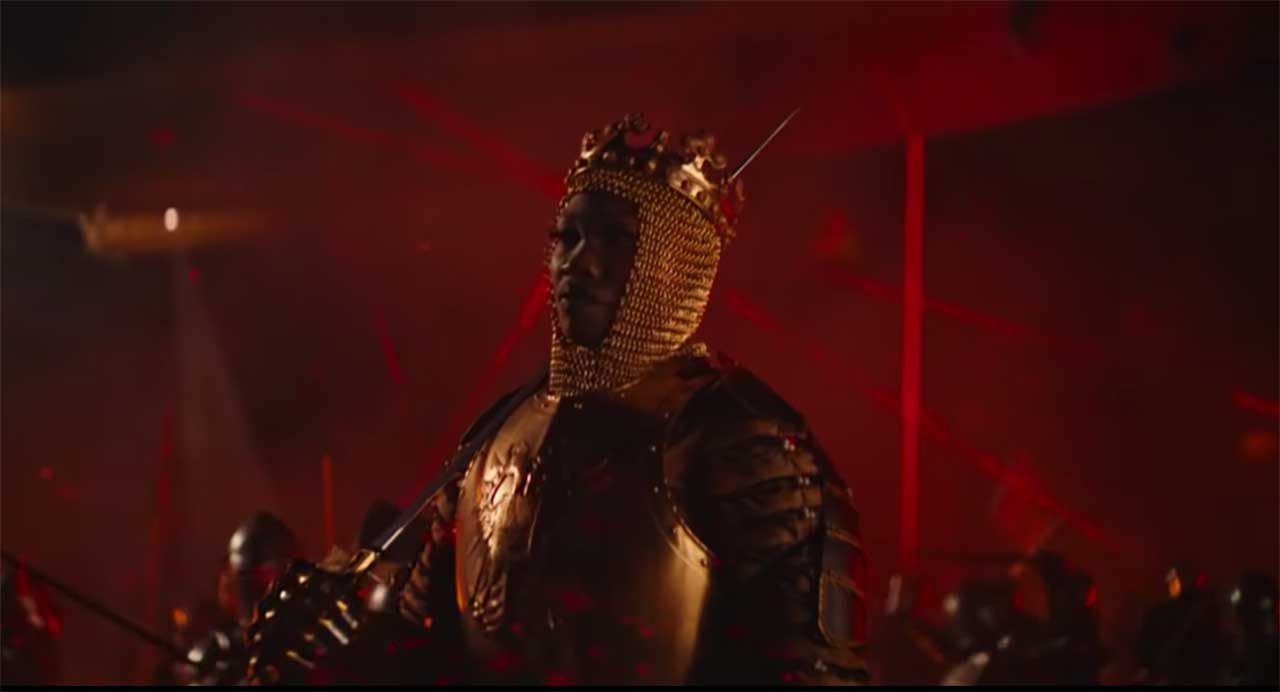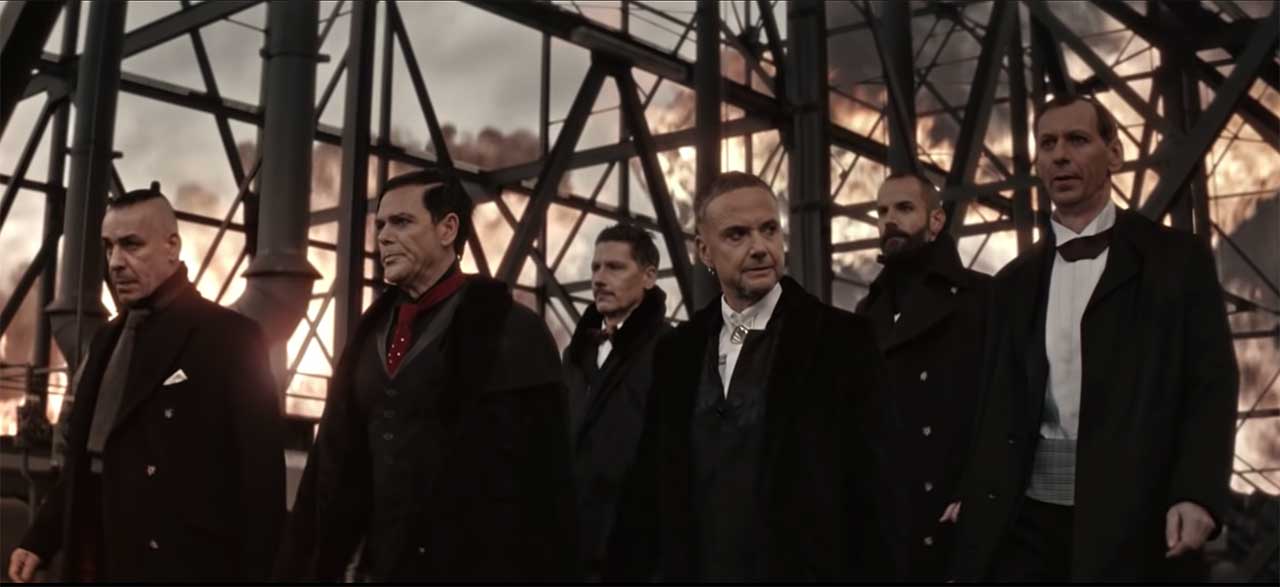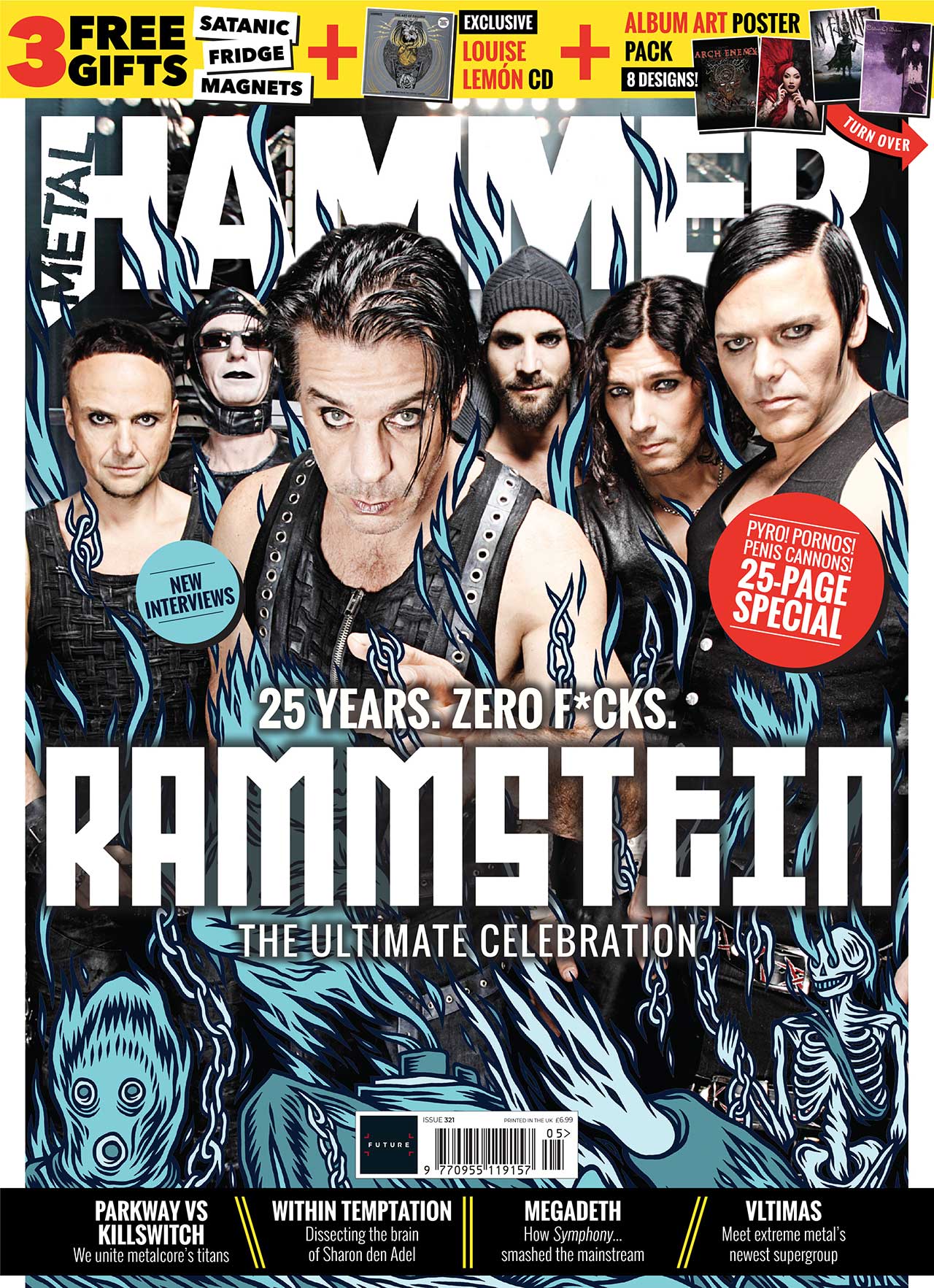When Rammstein unveiled Deutschland, along with its jaw-dropping video, it was the mark of a band reasserting their territory.
Before Deutschland, Rammstein hadn't released any new material in 10 years. A decade out of the game is a long time in any band's career, but the 2010s was a time when technology – and the music industry as a result – moved on at breakneck speed. For a band like Rammstein, who had always positioned themselves as being miles ahead of the curve, coming back with something big was important.
Still, no one expected Deutschland.
With a runtime that exceeds nine minutes, the video – much as the song itself – takes a route that spans German history, with not a grisly stone left unturned. Directed by Specter Berlin, it is more than a music video – it's a cinematic spectacle in its own right.
It's also wildly confusing for those not up on their German history. So, we asked Dr Alexandra Lloyd, lecturer in German at the University of Oxford, to explain what the fuck is going on during the video's nine minutes.

Rammstein's Deutschland video explained: introducing Germania
Rammstein’s Deutschland takes us on a thrilling, violent, and moving journey through German history. At over nine minutes, it gives us a panorama of events and historical and mythical figures, and there are so many references and Easter eggs that fans and commentators will be poring over it for some time to come.
The video opens in AD 16, on the ‘barbarian’ side of the limes, the border of the Roman Empire. Roman soldiers creep through the woods in the aftermath of the Battle of the Teutoburg Forest. The Romans were ambushed by an alliance of Germanic Tribes, led by a chieftain called Arminius (the original Hermann the German). Three legionary standards were captured, a loss symbolic and moral, as well as physical, and decades were spent trying to recover them. Rome never again attempted to take the lands east of the River Rhine, known as Germania.
‘Germania’ refers not just to a place, somewhere partly defined by where it isn’t (Rome) as well as where it is, but also to a national figurehead, traditionally representing the German people. Germania is a strong woman, usually armour-clad and battle-ready. Various symbols appear with her, among them a breastplate with an eagle, a black, red, and gold flag, and a crown. Look out for these in the video – they come up again and again – and the colours of the contemporary flag are there in every scene.
We get our first glimpse of Germania here (played by Ruby Commey), who stands holding Till Lindemann’s severed head. Next, astronauts appear carrying a metal and glass box shaped like a coffin. In the background we see a U-boat – a German submarine, used in World Wars I and II. Then we move to a scene set at a boxing match which takes us to Weimar Germany (1918-1933), a period known for its political instability but also greater cultural liberalism. Here, Germania appears in the cabaret costume of a flapper girl, and the boxers fight with knuckle-dusters as a crowd cheers them on.

Rammstein's Deutschland video explained: Marx, Lenin and the GDR
We see the former East Germany, complete with busts of Marx and Lenin, the national emblem of East Germany, and a lookalike of the long-serving, insular, and repressive GDR leader Erich Honecker. There’s another astronaut, or rather a cosmonaut: Sigmund Jähn, the first German in space, who flew with the USSR’s space program (and who’s also a character in the 2003 film, Good Bye Lenin!). Medieval monks feast grotesquely on the supine Germania, tearing sauerkraut and sausage from Ruby Commey’s body, prison inmates are beaten by guards dressed in police and military uniforms from different historical periods.
The most obviously shocking scene references the Holocaust and the Nazi period. Four members of the band, in the striped uniforms of camp inmates, wait at the gallows, about to be hanged. They wear the cloth emblems used to identify their ‘crimes’: a pink triangle for homosexual prisoners, a yellow star for Jewish prisoners, a red and yellow star for Jewish political prisoners.
This sequence, teased in an earlier promo video, has already caused controversy. Have Rammstein the right to do this? Do they trivialise the suffering of Holocaust victims? How can they justify using Holocaust imagery to promote their new video? These are important questions that are part of a much bigger debate about the ethics of using the Holocaust in art and media.
Other scenes include the band walking away from a flaming airship, referring to the 1937 Hindenburg Disaster, in which 36 people died. Rats scuttle across the floor when the monks first appear, suggesting the Pied Piper of Hamelin, a legend with origins in the 13th century.
Germania walks towards the camera in a leather jacket, gold jewellery and a string of bullets across her chest, resembling the chariot drawn by four horses (the ‘Quadriga’) on top of the Brandenburg Gate in Berlin. The band members’ heads are shown as white marble busts, taking us to the 19th century Walhalla memorial in Bavaria, built as German Hall of Fame, its sculpted heads of German worthies on display to this day.
In the prison, hundreds of banknotes fall from above, suggesting the devastating hyperinflation Germany suffered in the 1920s. Nazis burn books, intercut with religious fanatics burning witches. We recognise members of the Red Army Faction (also known as the Baader-Meinhof group), a militant organisation active in the 1970s in West Germany. And in a blink-or-you-miss-it exchange, we are reminded of the much-criticised relationship between the churches and the state during the Third Reich.

Rammstein's Deutschland video explained: the finale
Each scene captures in a moment the icons of an era, and the video cuts between them more and more frenetically as it goes on. Events bleed into each other, linked by the presence of the band members and the red laser beam that appears throughout the video, a ‘roter Faden’ (red thread or central theme), connecting each event.
Germany engages with its history in a very particular way. Try to imagine the video about Britain, with Britannia played by Ruby Commey. What would the equivalent events be? Quite a few of the tableaux might be similar – Romans, Crusaders, monks, 18th-century soldiers, collarless shirts and bareknuckle boxing – but would it have the same impact?
There’s no affection, and perhaps not much hope: its pessimistic tone seems to be quite an off-brand message for post-1989 Germany, which wants to acknowledge its past critically, while also looking to its future as a state at the heart of Europe. And actually, while we get a lot of medieval and twentieth-century history, the video’s tour through the past seems to stop in the late 1980s, before the fall of the Berlin Wall and Reunification of East and West Germany. Instead, we jump into the future, where the space-suited band take Germania into the unknown, travelling in that coffin-shaped glass box.
There’s an echo of the video for Sonne, where Snow White is trapped in a glass coffin. In fact, a piano version of Sonne plays over the end credits of Deutschland. This is a useful link for understanding something of what Rammstein is doing here. In Sonne, where the band’s characters free themselves of Snow White (naturally, they’ve been her sex-slaves), only to realise that they have made a mistake and long for her return, the overwhelming feeling of Deutschland seems to be that when it comes to Germania (or Germany): you can’t love her, and you can’t live without her.

Metal Hammer are currently celebrating 25 years of Rammstein in our new issue, which is on sale now. We have over 25 pages of Rammstein, including interviews with their producer, collaborators, tourmates and many other people that have been on the frontlines for one of metal’s most insane stories. In all good newsagents now, or buy it direct here.